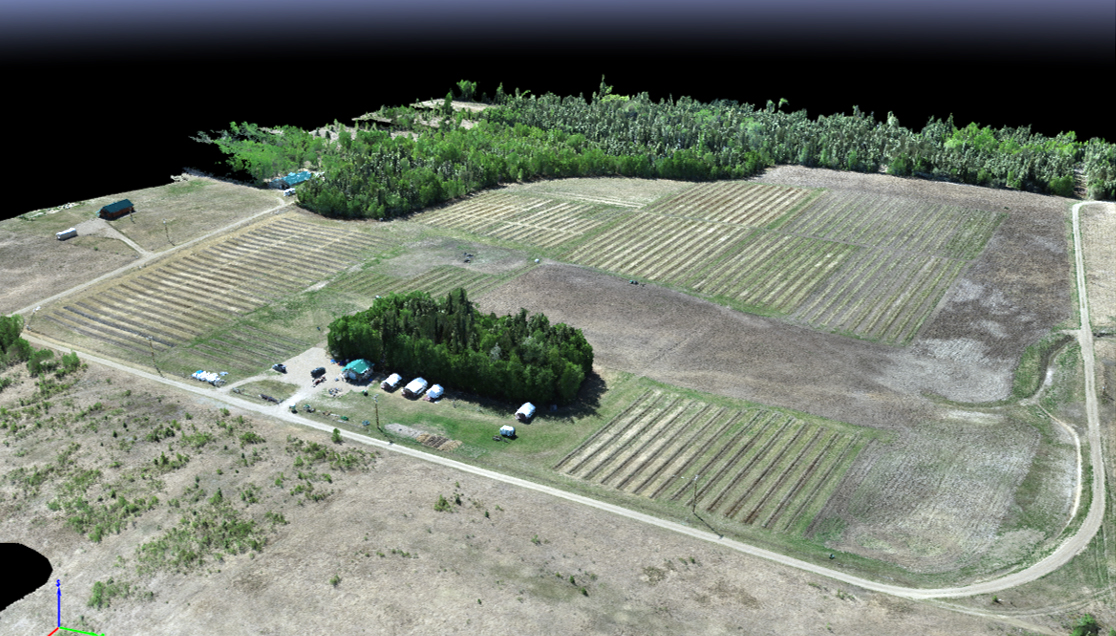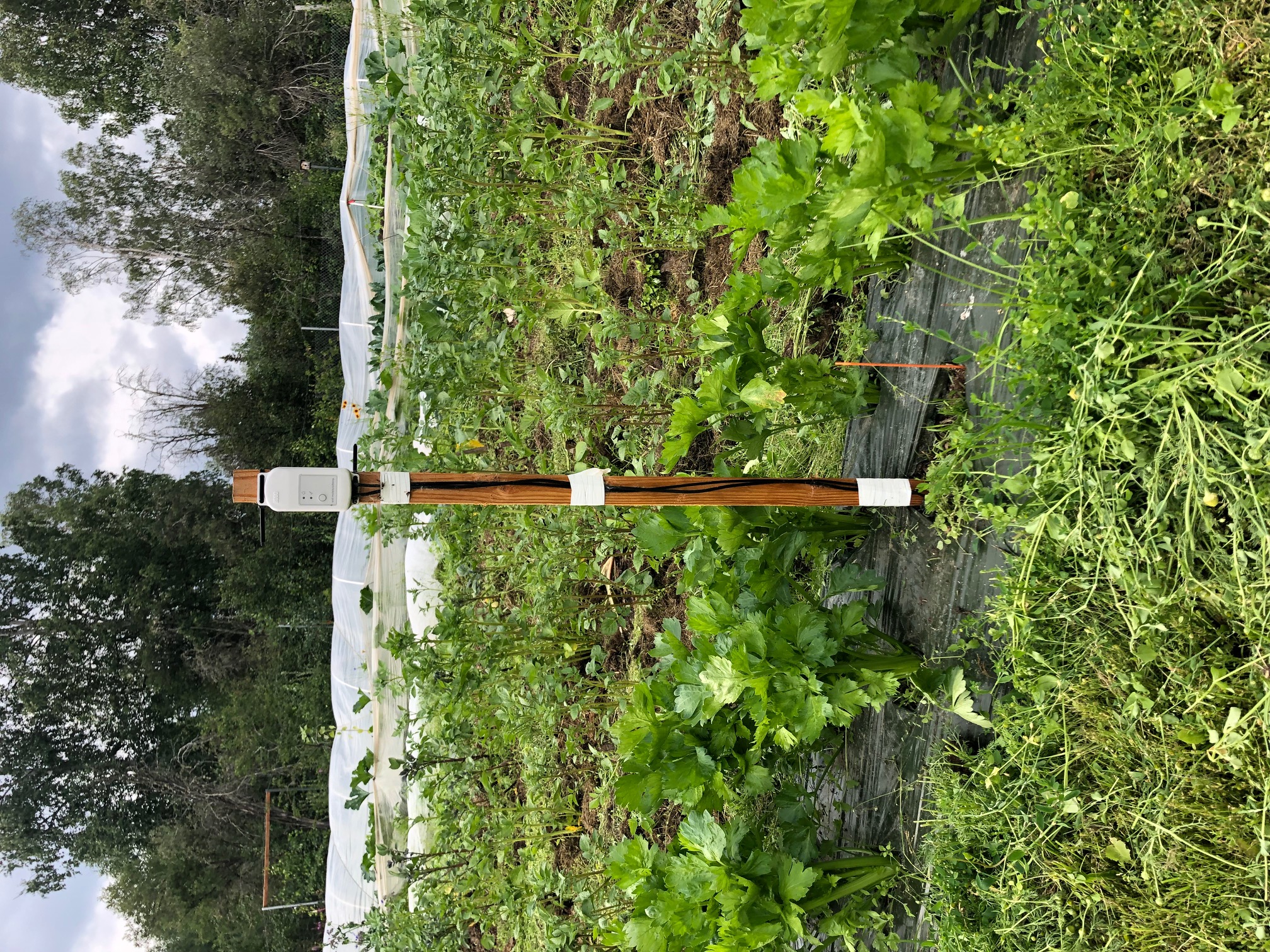Permafrost knowledge needed to support sustainable northern agriculture
Jeff Richardson
907-474-6284
Aug. 11, 2022

A drone image shows a farm in the Fairbanks area. Data collected by drones can detect and measure subsidence from permafrost thaw, monitor crop health and estimate crop yield.
Northern farming could experience huge growth in the 21st century as boreal regions warm. A new University of Alaska Fairbanks-led study argues that a better understanding of how permafrost and agriculture interact is needed to make it happen.
The study, published in the August issue of the journal Nature Climate Change, outlines steps needed to navigate a northern farming boom in regions where permafrost is the literal foundation of many communities and infrastructure.
Boreal regions are expected to gain an estimated 3.3 million square miles of potential agricultural land in roughly the next half-century, and an agricultural shift may already be underway. The Lower 48 had a 3.2% decline in the number of farms from 2012-2017, according to the U.S. Department of Agriculture, which coincided with a 30% increase in Alaska farms.
However, that shift will come with complications for farmers. Land with discontinuous permafrost is expected to provide the largest growth in agricultural acreage. When ice-rich permafrost thaws, the resulting subsidence can cause equipment problems, waterlogged fields, infrastructure damage and loss of topsoil.
“It is essential to consider permafrost in any northern agricultural development, as, for example, about 80% of Alaska is located within a permafrost zone,” said lead author Melissa Ward Jones, a postdoctoral fellow at UAF’s Water and Environmental Research Center and lead researcher for the National Science Foundation-funded Permafrost Grown Project. “It is also critical to recognize that different permafrost types exist and their response to thaw varies.”

A sensor that measures soil moisture and temperatures is installed in a row with celery crops at a farm with ice-rich permafrost in the Fairbanks area.
The study outlines four science-based steps that will reduce risk and help inform decisions as northern agriculture expands:
- More collaboration is needed between agriculture scientists and those who study permafrost, since researchers in those fields have rarely worked together. The paper argues that more funding should be available for long-term transdisciplinary projects to study those systems.
- The expansion of northern agriculture needs to include techniques specifically adapted for permafrost-affected soils, rather than simply shifting techniques from southern climates. Permafrost affects not only how crops grow but also land issues like surface hydrology, groundwater availability and biogeochemical cycling.
- Research needs to include collaboration with farmers to identify problems and develop solutions. Those partnerships will also help farmers communicate knowledge gaps to scientists.
- Government policies focused on permafrost, while being mindful of farmer demographics, are needed. Local governments vary in their view of permafrost, with some seeing it as an asset worth protecting and others as a hazard. The presence of permafrost is rarely discussed in government publications about soil classifications, but such data is important for potential land buyers. Tribal consultation should also be prioritized, since such development will happen in and around Indigenous lands.
Other UAF researchers included Tobias Schwoerer, Glenna Gannon, Benjamin Jones and Mikhail Kanevskiy. Several Fairbanks-area farm owners also contributed to the study, including Iris Sutton, Brad St. Pierre, Christine St. Pierre, Jill Russell and David Russell.
ADDITIONAL CONTACT: Melissa Ward Jones, mkwardjones@alaska.edu
029-23


